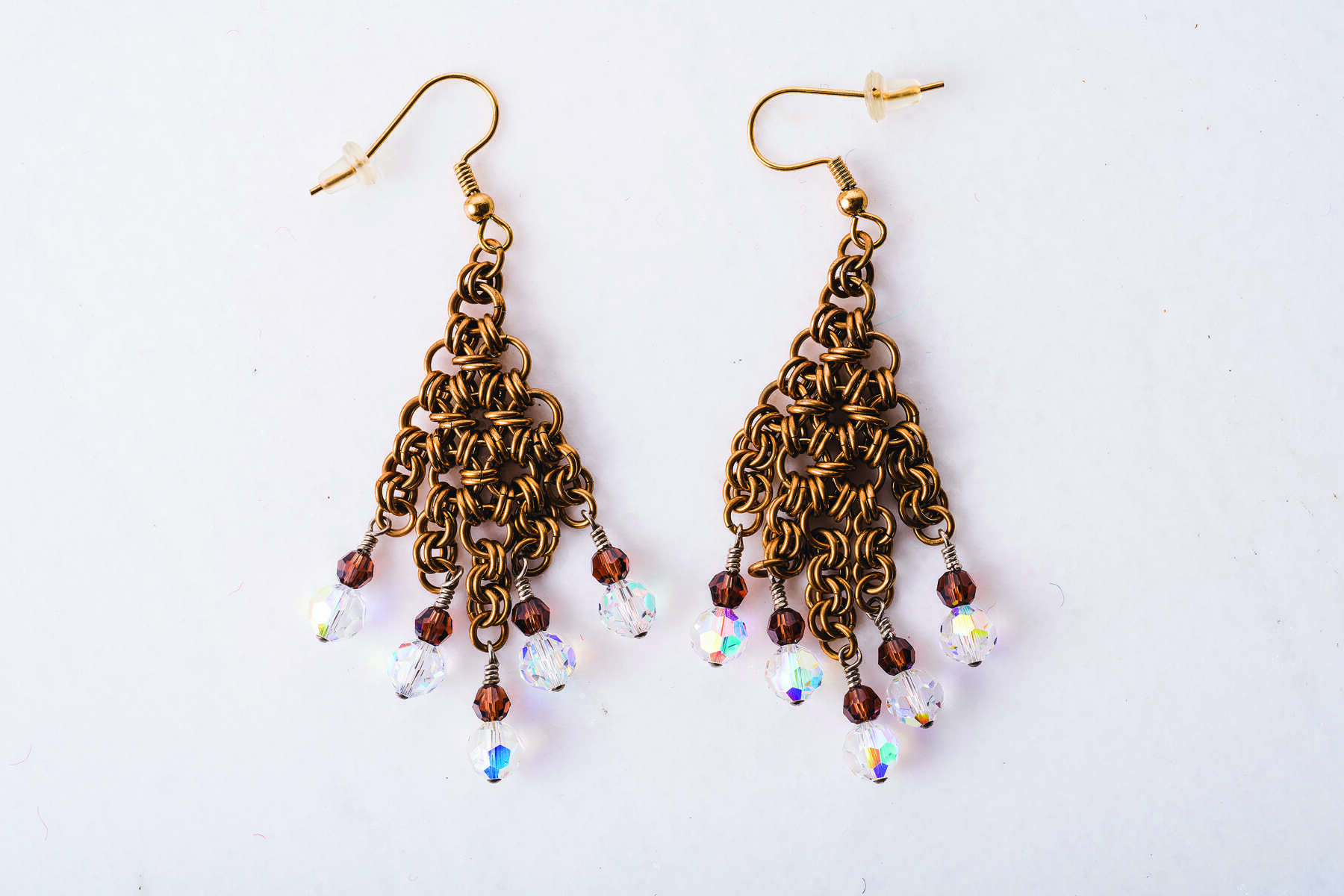
A Brief Introduction to Chainmail
By Shona Cairncross
The term chainmail is derived from the French maille, the root of which is the Latin word macula, the mesh of a net. It often calls to mind images of knights dressed in armour crafted of interwoven metal links that could block the thrust of a sword or turn the point of an arrow. Chainmail armour in bronze and iron has been found in the graves of ancient Celtic warriors dating back over 2,700 years with further historical evidence supporting the use of interwoven rings as armour in ancient Japan and the Middle East.
Modern practice involves wrapping metal wire around a rod to form a tight coil and then cutting the coil to form individual rings referred to as jump rings. These rings are then individually linked into a specific weave. Rings come in a vast array of thicknesses (gauges) and sizes and knowing which to use will determine the success of a finished piece. A working knowledge of both base and precious metals is also important as there are a wide variety of materials available from aluminum to copper, sterling silver to gold with several more besides. Creative adaptations even make use of anodized materials and rubber rings for a truly modern approach.
Though there are over 1000 documented chainmail patterns with their own distinct weaves, there are a few basic families:
1. European 4 in 1: the most commonly seen flat mail weave which begins with a unit of four rings linked by a primary ring. This style creates flat, dense meshes.
2. Japanese: a more grid-like 4-2 link style that can be used to create box structures or flat hexagon based designs.
3. Persian: a more modern family than its European and Japanese counterparts, Persian weaves are named more for the intricate nature of their design than for any recorded historical ties to the Persian Empire.
Creating chainmail jewellery is a labour of love; each ring in a finished piece has been “woven” by an artisan who has taken great care to select ring sizes and materials that complement the overall weave. Each piece is a unique creation to treasure.
[Published in ArtsTalk Summer 2019]
